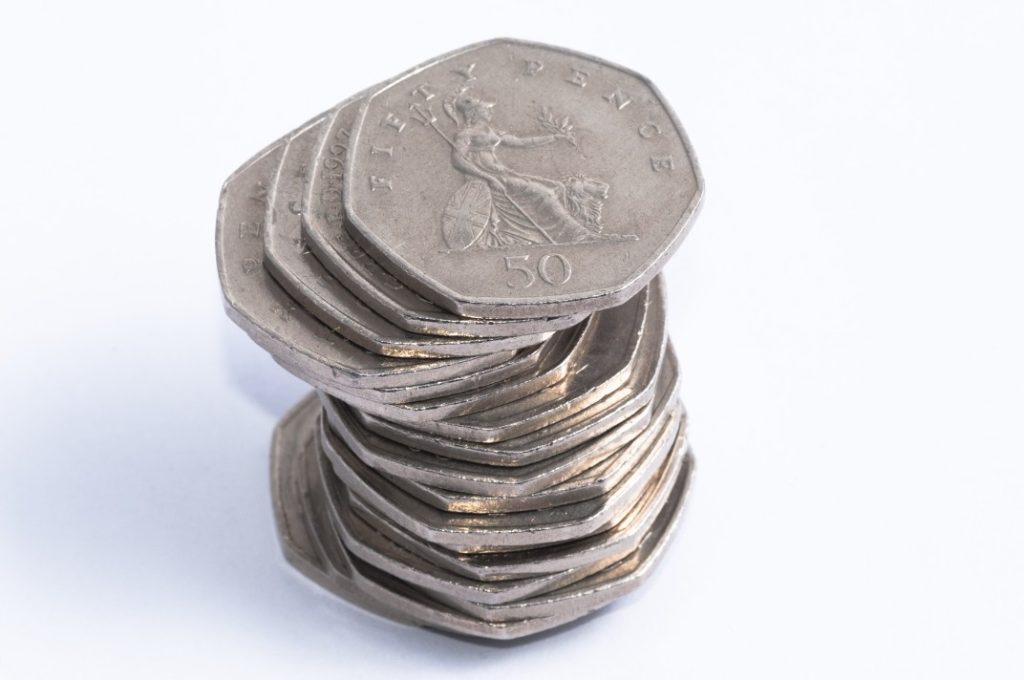The Kew Gardens 50p coin, featuring the iconic Chinese Pagoda, has become a numismatic treasure, often fetching prices far exceeding its face value. Originally issued in 2009 by the Royal Mint to commemorate the 250th anniversary of the gardens, the coin’s limited mintage of just 210,000 has fueled its desirability among collectors. In contrast to mass-produced coins like the Brexit 50p, which saw 10 million enter circulation, the Kew Gardens 50p’s scarcity has cemented its position as one of the rarest coins in circulation. This rarity consistently places it at the top of scarcity indexes, making it a highly sought-after piece for avid collectors. Recent sales on eBay have demonstrated the coin’s potential value, with one selling for £135, a remarkable 300 times its face value.
The coin’s design showcases the intricate details of the Chinese Pagoda, a Grade I listed building gifted to Princess Augusta of Wales in 1761. The design also incorporates a decorative leafy climber entwined around the pagoda, along with the dates 1759 and 2009, representing the founding of Kew Gardens and the coin’s entry into circulation, respectively. This detailed design, coupled with the coin’s limited mintage, adds to its allure. The Royal Mint itself recognizes the Kew Gardens 50p as “arguably the most sought-after” 50p coin, further bolstering its status among collectors. The coin’s popularity has sparked bidding wars on online auction platforms like eBay, with collectors vying to add this rare piece to their collections.
The recent sale for £135 highlights the potential profits to be made from owning such a rare coin. The sale, which concluded on January 16th, saw intense competition among 13 bidders, driving up the price significantly. The seller presented the coin in a display box, adding to its appeal and potentially contributing to the final sale price. This is not an isolated incident, as other Kew Gardens 50p coins have sold for substantial sums on eBay, with some reaching prices as high as £700. These impressive figures underscore the coin’s investment potential and the strong demand among collectors.
While the £135 sale represents a significant return on investment, it is essential to note that the value of rare coins can fluctuate depending on factors such as demand, market sentiment, and the condition of the coin itself. Verification by the Royal Mint can significantly increase a coin’s value by assuring buyers of its authenticity. It is also crucial to exercise caution when purchasing rare coins online, as counterfeit versions exist. Carefully examining past sales data on platforms like eBay can provide a more accurate assessment of a coin’s true market value and help avoid overpaying.
Determining the true value of a rare coin can be complex, as various factors influence the price. Condition, rarity, and demand all play a role. Resources such as Coin Hunter and the Changechecker scarcity index can assist in assessing a coin’s potential value. However, the ultimate determining factor is what a buyer is willing to pay. Observing completed sales on eBay can offer valuable insights into current market trends and price ranges. It’s crucial to remember that listed prices don’t always reflect the final sale price, so focusing on completed auctions is essential for accurate valuation.
For those interested in selling their rare coins, several strategies can maximize returns. Presenting the coin in a protective case or display box can enhance its appeal. Verification by the Royal Mint provides authentication, adding to buyer confidence and potentially increasing the selling price. Advertising a coin as genuine, especially after verification, can further attract potential buyers. When selling on auction platforms, setting a realistic starting price can encourage bidding and potentially drive up the final sale value. By following these strategies, sellers can increase their chances of achieving a favorable return on their rare coin investment.




